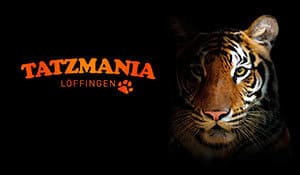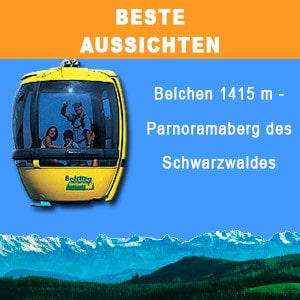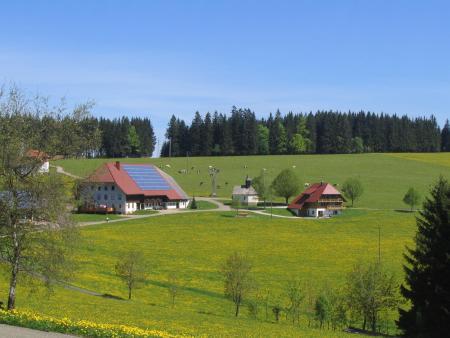You may speak German fluently, but it can still be difficult to understand the southern German dialects. Many in Berlin living Germans seem to have a bad impression of German dialects in general. Some describe it as ugly and uncivilized peasant talk.
When you go on a trip from Berlin to Venice, the further south he goes, the more south he goes, he gets a little nervous, whether he understands the people. Don't worry - you'll love the rural dialects down here. Standard German can sound rough at times, but the further south you go, the more intimate and musical the language is.
Here are 5 practical tips.
1. Ask to repeat
The dialects won't be too difficult to understand until you reach the region with the Black Forest in southwest Germany. During the first interview, don't be afraid to say "Please repeat". Speaking and understanding Standard German is no problem for the locals to communicate with you, but when they are speaking to each other, you really need to focus to get the gist of it. After that, you will get used to some of the specifics of the dialect and begin to understand more.
2. Recognize the diminutive in Alemannic
The most obvious difference between Alemannischer and Standard German consists in how the diminutive changes. In standard German, the diminutive ending (which makes every noun smaller and cuter) is -chen or -lein. For example; Little table, girl, little house, mouse, etc. In the Black Forest they have their own ending: -le, and almost every word has it. So girl will be girl. Some more examples (dialect/high German):
| sausage | hot dog | |
| Male | male | |
| birds | little bird |
3. Learn unique words
There are also tons of new words that may never have been heard before, and luckily the locals are happy to translate them into German if necessary. The first Alemannic words are different types of jam. What is known as currant jam is known here as Dreiblesgsälz. Strawberry jam is Bräschdlingsgsälz.
4. Consult a private tutor

Online lessons with private tutors prepares you well for the dialect. Sites like Preply hire experienced teachers who know the different dialects and will help you at any time you choose. Classes take place when you want and last as long as you want. Our top tip: get help from a tutor in advance, before heading south (or north - it depends on where you are).
5. Don't be afraid to explore the place
In the Black Forest in Germany you can discover unique German traditions and customs. From culinary specialties to arts, crafts and living traditions. Don't be afraid to explore them all!
What do you think of when you think of German traditions? Maybe the annual Oktoberfest or the large selection of sausages that you can eat? Absolutely! But there is so much more to discover in this country and one of the best places to immerse yourself in Germany's rich culture and history is the Black Forest in Baden-Württemberg.
In case you don't already know this region: Baden-Württemberg is located in the southwest of Germany, enclosed by France in the west and Switzerland in the south. While Stuttgart is the capital of the region, it is Freiburg the unofficial capital of the Black Forest. Both are great starting points for exploring the rest of the region.
Baden-Württemberg is the cradle of the car. It is the birthplace of the cuckoo clock and the cherry pie, also known as the best pie ever.
One of the main reasons people choose to visit Germany is to learn more about its traditions and history.
Brief history of the Black Forest
The Black Forest was practically impenetrable in Roman times, and the tribes living behind the forest regularly attacked the Roman borders. In the middle of the Middle Ages, the forest was gradually settled and grew into a region with farmers and foresters who developed their own culture and identity.
In the following centuries the military importance of the Black Forest grew and various defenses were built. At the end of the 19th century, much of the area was more or less cleared, but luckily a lot of new plantings have been made recently and nature is flourishing again.
Well, some tips on things to do here.
Visit the home of the cuckoo clock
The Cuckoo from the Black Forest have developed into a real global brand over the years and are strongly linked to this region. I visited the largest cuckoo clock in the entire Black Forest and found a huge shop and workplace with even more handmade clocks.
They aren't cheap, but when you look at the skills required to make one you can understand the price. And from super cheesy to really modern, there is a watch for every taste.
Discover traditional design at Zeller Keramik
The “Cocks & Hens” design, which you will discover in many local restaurants and hotels in the Black Forest, is the original and most popular design from the world-famous ceramic manufacturer Zell ceramics.
Even after 200 years it is still hand poured and then painted! There is every piece you can think of.
In the Dorotheenhütte glass factory in Wolfach there is a selection of Cocks & Hens to see and once a week a lady from Zeller Keramik shows her skills in painting the cups and bowls.
The farmhouses in the Vogtsbauernhof open-air museum
Stroll among the old buildings and meet people in traditional clothing. Seeing how people lived long before you did, how they worked and what they did in their free time is very interesting.
If you want to get a good feeling for the historical traditions and customs of Germany, I recommend a visit to the Black Forest Open Air Museum in Gutach.
In the center of the museum is the Vogtsbauernhof (Vogtsbauernhof) built on this site from 1612. The remaining buildings on site range from single-family houses to (saw) mills to a chapel, various haylofts, etc. All of them can be visited.
Around the building there are farm animals and a herb garden with over 130 medicinal herbs. Through demonstrations and exhibitions, all crafts, tools, customs, traditions, work and ways of life of bygone times are brought to life. You can even spend a couple of hours here exploring it all. And you should!










